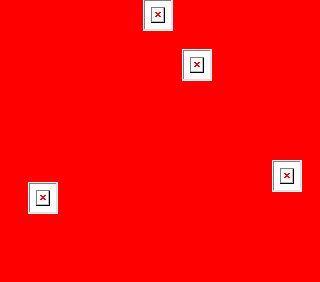Splash art originated in the 1940s in comics, where the term referred to a full page of visuals at the front of a book. Pages were designed to engage the reader's imagination along the lines of the comic's broader concept, while standing independent from the narrative. In the late 1990s, when the widespread use of the application Flash opened up new possibilities for animation and interactive media, the idea of the splash page migrated to web design. Online splash art brought visual excitement to a webpage when low modem speeds made it impractical to post large or moving images amid a site's textual content.
Rhizome introduced splash pages to its web site in 1998 in order to display artwork with greater immediacy....
Rhizome introduced splash pages to its web site in 1998 in order to display artwork with greater immediacy....
Launch Project 
 splash art by Waldemar Pranckiewicz, 1999
splash art by Waldemar Pranckiewicz, 1999
About
Polish artist Waldemar Pranckiewicz is a fan of the splash page, and left one up on his old website (www.czas.free.art.pl), which has been inactive since 2005. He is interested in interface models and is drawn to simple designs. Pranckiewicz's splash page scatters buttons with red x's across a red background, creating an abstract space that evokes error messages or broken images without referring to them directly. A scroll bar allows the field to extend vertically, but scrolling is the extent of the page's interactivity.
http://www.rrose.org
http://www.rrose.org